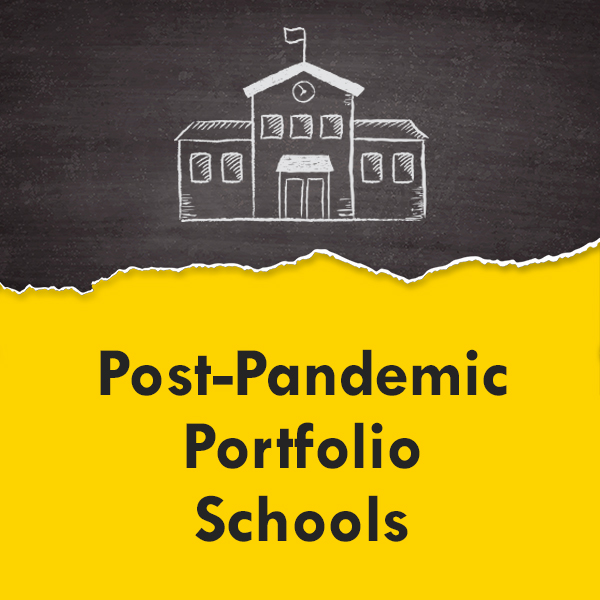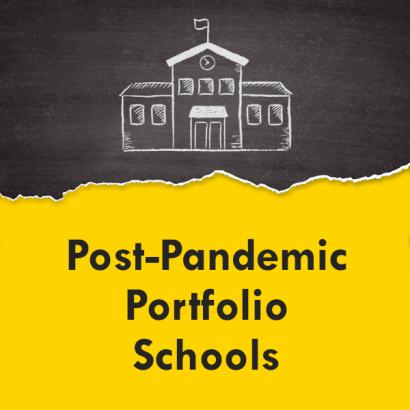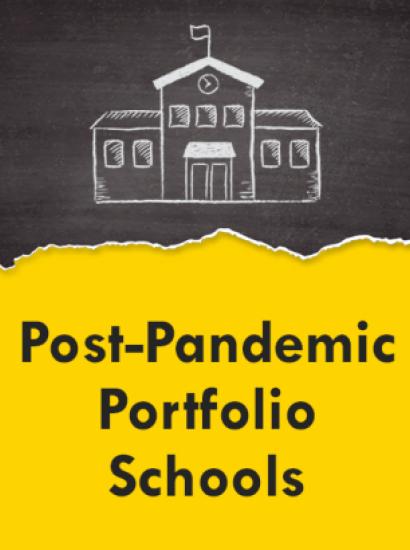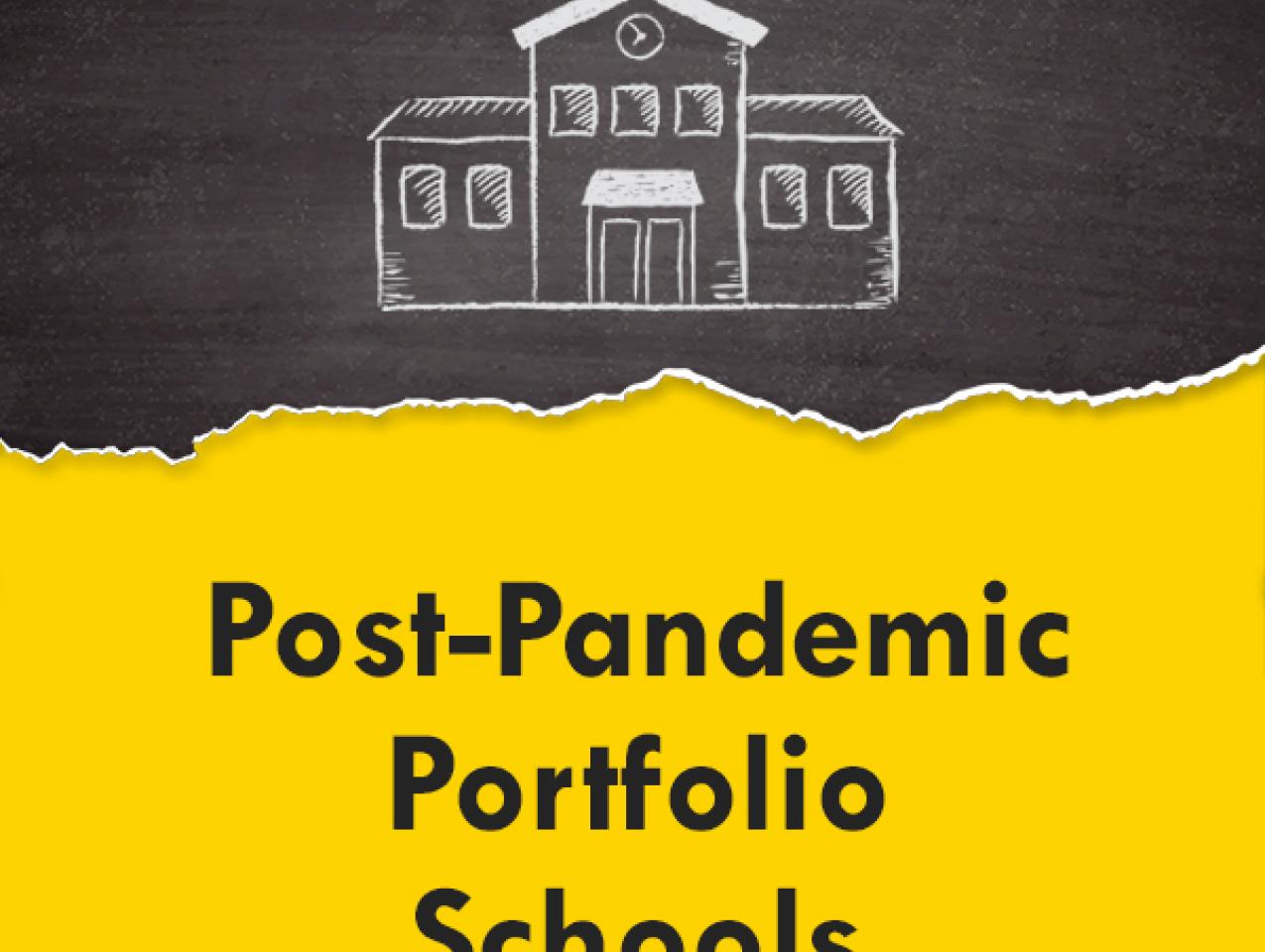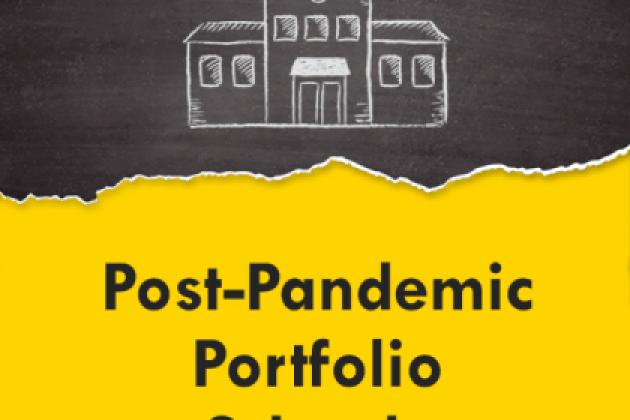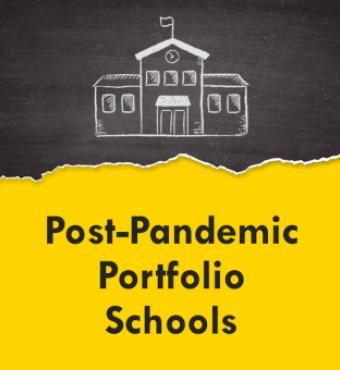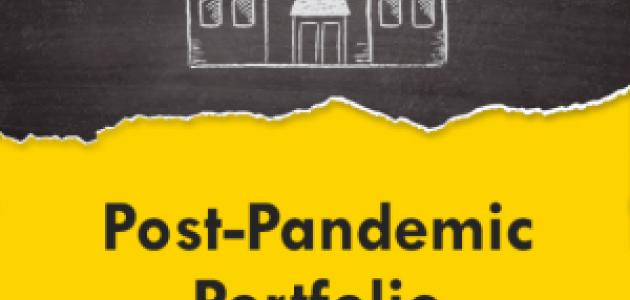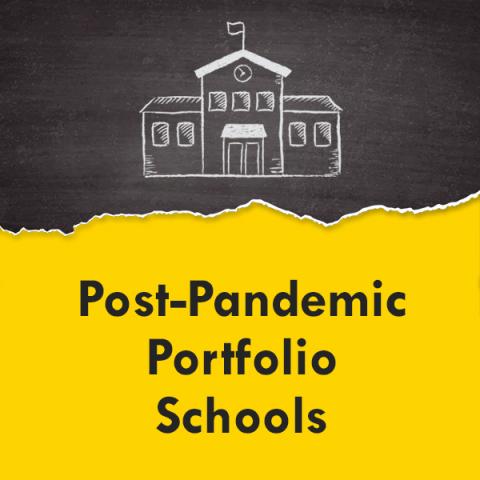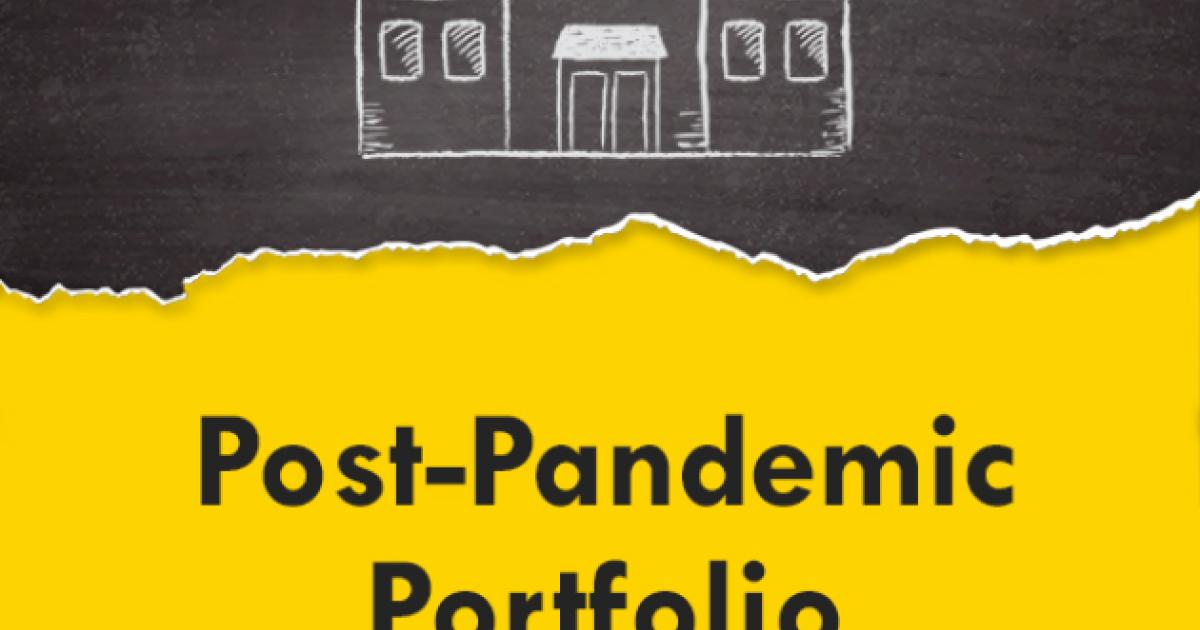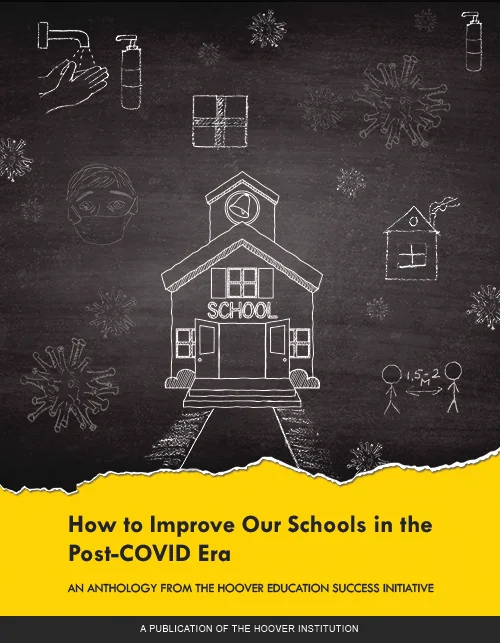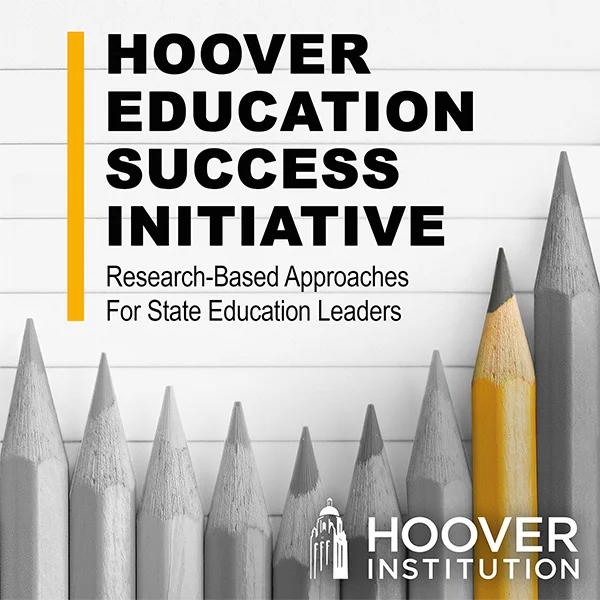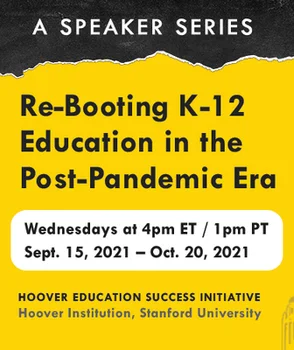- Reforming K-12 Education
CLICK HERE TO DOWNLOAD .PDF
Recommendations
- To help forestall post-pandemic enrollment declines in urban districts, states provide fiscal incentives to urban districts to encourage the introduction and extension of a district-wide system of portfolio schools offering a wide selection of options, which gives every student a choice of school. A range of options is especially needed at the middle and high school levels. The size and nature of state incentives must necessarily depend on state fiscal legacies and the political realities of the moment. But, crucially, the incentives must be made available only as districts implement their portfolio plans. And state policy makers need to retain the authority to withhold downstream funding if the portfolio plan is not adequately implemented.
- Principals of portfolio schools be selected for their ability to provide strong leadership and be given the necessary preparation and autonomy that enable them to recruit staff and design a curriculum suitable to the school’s traditions and aspirations.
- District leaders monitor school performances with multiple measures of school effectiveness and support schools in need of technical and other assistance.
- Portfolio schools should be combined with other choice opportunities, as discussed elsewhere.1
Urban Schools in the Time of COVID-19
For an entire school year, millions of students have been asked to learn mainly—if not exclusively—online. Children sit—or don’t sit—before computer screens, with glazed eyes, wandering minds, and attention distracted by background noise and music. Social isolation undermines the willingness to learn.
In the words of one Pennsylvania parent: “I’ve watched her go from a child that has loved school, thrived at school her entire life to one now, using her own words, who just doesn’t care anymore.”2 Urban schools are the most likely to have remained closed to in-person instruction throughout the 2020–21 school year, and they are especially likely to have closed the school door to those in middle and high school.3 Academic performance is falling. Absenteeism is rampant. Chronic absenteeism—missing 10 percent of the time or more—is raging. Midway into the 2020–21 school year, 40 percent of Boston’s juniors and seniors were reported to be chronically absent.4 Nearly every state is reporting enrollment declines.5 When complete information becomes available, the declines are likely to be worse than currently reported, as many districts assume a student is enrolled unless evidence to the contrary is definitive. In New York City, students can “attend” school simply by pushing a button on a computer once a day.6[6]Urban districts are finding it difficult to focus on the needs of parents and children in good part because they are hamstrung by union demands that schools remain closed and threatened by strikes if they open. In Chicago, teachers went on strike to keep the schools closed, then finally agreed to open them for children in first and second grade. President Joe Biden, at the height of his honeymoon in office, promised to open the schools within one hundred days but then was persuaded by union pressures to declare a school open if a child could attend one day a week. The risk of spreading infections inside school buildings has been greatly exaggerated. Children and young people are much less likely than others to become infected, spread the infection, or become seriously ill if infected. According to the Centers for Disease Control and Prevention (CDC), only twelve of the first 68,998 US deaths from COVID-19 occurred among children under age fourteen.7 Yet union leaders in many large cities are insisting that teacher salaries be paid in full but no one be asked to teach in person—unless ventilation systems are overhauled,8 daily testing is required, and vaccination of teachers and other school employees is universal.9[9]
✏1 Impacts on students are uneven. Some children have survived—even prospered—under the coaching of amazing teachers, home tutors, neighborhood learning pods, and capable, attentive parents. But for most urban students, the 2020–21 school year is marked by computer screen drudgery or worse. Research reports,10 parent surveys,11 and statistical models12 all portend grave losses in learning, physical fitness, social relationships, and emotional well-being. Students from low-income families are much less likely to be attending school in person than those from high-income families.13[13]Some families have switched to charter schools or the private sector, turned to homeschooling,14 or moved to places where schools are open, as many parents are finding it possible to be equally productive at their work in a home environment as in the office.15 One family even left the closed schools of California for open schools in Texas, never to return until the boys finish high school.16[16]
Once the pandemic comes to an end, urban districts need to regain the confidence of families and students, to forestall the ongoing flight from the urban school, and to contain the power of unions. They can take a strong forward step in this direction by designing a portfolio model for their districts so that all schools become schools of choice. States should provide fiscal incentives to districts to encourage them to adopt and extend the portfolio approach to urban education. ✏2 The portfolio approach described here is best combined with other choice reforms discussed elsewhere.17 ✏3
The Portfolio Model
✏4 The portfolio model is quite the opposite of the cookie-cutter neighborhood school and comprehensive high school, which offer the same line of products to all students. Urban districts that adopt the portfolio model offer instead a range of choices that allows families to select the type of school they feel best suits the needs of the student. Just as painters show their artistic oeuvre in a portfolio for their customers to consider, so a portfolio district informs students and families of the array of schools and approaches among which students and families may choose. In a large urban district, these can be expected to vary widely, especially at the middle and high school levels. ✏5 The range may include such distinctive school types as International Baccalaureate, Montessori, bilingual immersion, college preparation, performing arts, math and science, history, and archaeology (with attention to immediate surroundings). Schools may decide to emphasize career readiness by focusing on one or more occupations, such as nursing, office management, physical fitness and sports medicine, hospitality, mechanics, and computer science. Some schools may require entrance examinations to assure that students are adequately prepared to pursue the curriculum the school offers. All schools will be expected to serve students with special needs, but some may concentrate on providing services to those with specific types of physical or other disabilities.
✏6 Schools of choice need to have both clarity of purpose and the agency to pursue that mission. Principals must be given sufficient autonomy to articulate a mission consistent with the school’s legacy and aspirations and control over instructional and pedagogical approaches, including the ability to allocate time and resources to ensure they are aligned with the school’s mission. Principals must also have the authority to make decisions with respect to recruitment, evaluation, and retention of staff.
✏7 A portfolio district must have strong, competent leadership in the central office. The superintendent and key aides must have the capacity to identify, recruit, and supervise the preparation of principals with the requisite leadership qualities. They monitor schools and principals to ensure faithful, effective commitment to the schools’ mission. ✏8 They track systematically the performance of schools and programs according to a wide variety of indicators of school effectiveness. They provide evaluation services to assist principals with the assessment of staff members. They intervene when it becomes clear that such is required. The central office also allocates resources across schools, keeping in mind the additional resources needed for special education, compensatory education, and English-language-learner programs. The district office also performs systemwide tasks, such as finance, collective bargaining negotiations, transportation, and admissions policies and procedures.
A Portfolio District in Practice
The school district serving Miami-Dade County, Florida, one of the five largest districts in the United States, illustrates the success with which the portfolio model can be implemented.18 The district is one of the highest performing urban districts participating in the National Assessment of Educational Progress. It also outperforms all other urban districts in Florida on state assessments and has received numerous national awards. In 2019 the district proved its popularity by obtaining in a referendum a tax increase that was used to finance a merit pay policy for teachers. Although it does not have every element of the proposed portfolio model, its features include the following:
- Students may choose from among approximately 90 percent of all schools in the district. A single application form allows students to rank their choices of schools. Preference is given to siblings and those living near the school. Lotteries are used for oversubscribed schools. A small number of assigned neighborhood schools remain, but the district plans to expand continuously the number of choice schools.
- Autonomous principals are selected by a strong, long-serving superintendent who places high emphasis on academic performance.
- Principals allocate resources within their schools, and they recruit and evaluate their teachers and other school personnel. Bonuses are available for high performance.
- Schools vary in their missions, providing middle and high school students with a wide range of options.
- A centralized data collection system allows central office personnel to observe continuously the performance of schools on a multiplicity of metrics, such as performance levels, absenteeism, and cleanliness.
Key Features
As in Miami-Dade County, the portfolio model includes a common application procedure, lotteries to select students for oversubscribed schools, and a comprehensive transportation system.
Common application procedures. A portfolio district provides an application form that allows students to rank their preferences among all schools, both district and charter. In Denver, for example, burdensome applications for each school were replaced by a single, streamlined school-enrollment procedure. A unified application system features one website, one deadline, and one form.19 Common applications also serve as equity-enhancing tools that boost participation by students from disadvantaged backgrounds. The development of common information systems and the provision of independent choice counselors further facilitate the exercise of choice. Once preferences have been indicated, a lottery is held for those schools that are oversubscribed.
Lotteries. New York City, San Antonio, Texas, Indianapolis, and increasingly many other urban districts are already making use of lotteries for the allocation of students among district schools. New, sophisticated algorithms have been designed to limit the “gaming” that sophisticated parents have used to get an edge in the lottery process.20 Lotteries are often used to give priority to siblings, those in need of special education, and those living closest to the school.
Comprehensive transportation. Ease of access to a school is key to a family’s choice of school, as it reduces an otherwise burdensome constraint on finding the best match between schools and underlying preferences of families. Transportation is costly and complicated, accounting for roughly 6 percent of school operating expenditures nationwide, a percentage that can be expected to rise in portfolio districts. In Boston, choice among a broad range of schools is combined with transportation policies that serve district, charter, and private sectors alike.21 State fiscal support is needed to help cover the additional transportation costs in a portfolio district.
Portfolio theory. The case for portfolio schools is bolstered by the following five considerations. They are especially pertinent at the middle school and high school level, where the pandemic seems to have accelerated chronic absenteeism and dropout rates.
- Choice enhances student engagement by matching student interests and preferences to those of the school.22 Offering an educational environment that suits a student is more urgent than ever as schools seek to reconnect with their students.
- Schools take pride in the students who have chosen them. Each school has a strong incentive to keep its students and attract next year’s incoming class by building and sustaining relationships with parents and communities.
- Application rates to district schools provide central administrators with behavioral information about school quality, which helps them identify problems that need to be addressed. Although schools are chosen for multiple reasons—distance, social respectability, athletic prowess, handsome buildings—persistently ineffective schools with noticeably declining enrollments signal a need for restructuring or closure.
- A chosen school strengthens student and family commitment to the institution simply because it is not an assigned school.23 A chosen product is valued in part because it is selected. For many, a brand, once chosen, becomes a treasured label to which a customer regularly returns—unless, of course, the brand proves seriously wanting. Specific attachments to a chosen institution are especially needed when students have become alienated from schooling in general.
- ✏9 Decentralization of authority shifts power to families and individual teachers, who have a strong stake in meeting student needs. Bureaucratized, centralized administrative structures are prone to giving higher priority to the concerns of organized employees, as the pandemic experience has shown.
Portfolio Antecedents
✏10 Offering families a choice of school is not a new idea.24 Some urban districts have offered a choice of school to at least some of their students from the very beginning of public education. Exam schools such as Stuyvesant in New York City, Latin in Boston, and Jefferson in Fairfax County, Virginia, have long traditions and enjoy national reputations for their high admission standards and the college readiness of their graduates.25 ✏11 Districts also offer vocational schools that certify students as carpenters, electricians, beauticians, and auto mechanics. The Duke Ellington School for the Performing Arts in Washington, DC, prepares young people who aspire to a life in the theater or the opera house. But the most direct antecedent for the portfolio model is the magnet school, which is expected to be a school of such high quality that it would attract students of all backgrounds from across a large district.
Magnet schools were first introduced to facilitate racial integration after the backlash against compulsory busing erupted in the late 1960s. Magnet schools spread quickly after Congress initiated the Magnet Schools Assistance Program, which has remained in place ever since, allocating over $100 million annually to eligible schools.26 As of 2017, 4 percent of all public schools, enrolling nearly 7 percent of all students, call themselves magnet schools.27 Although magnet schools differ in many respects, they share an essential characteristic: students attend them only if they have chosen that school. To facilitate integration, magnets are usually situated in residentially integrated areas or near racially defined boundaries. Anticipating the portfolio model, the magnet school generally has a special focus, such as math and science, performing arts, or Montessori instruction. They often are given extra resources to pursue that mission and attract students from across the district. Most, but not all, evaluations find student performance at magnet schools to be, on average, higher than at nearby neighborhood schools.28 Parents of children attending a magnet school are more satisfied than those whose children attend assigned district schools.29 The magnet school has proven sufficiently attractive that many districts have borrowed its features to begin experimenting with approaches that approximate the portfolio model. In addition to those discussed elsewhere in this essay, these include Cleveland, Ohio; Newark, New Jersey; Oakland, California; and Grand Prairie, San Antonio, and Spring Branch in Texas. Other districts—Atlanta, Detroit, Kansas City, Missouri, Philadelphia, and Tulsa—provide parents with choices among schools but retain more authority within the central office.30 Los Angeles, a large countywide school district, has created a smaller portfolio zone that has enhanced student performance at schools across the zone without increasing ethnic segregation.[31]
Resistance to Portfolio Schools
Despite the popularity of magnet schools and the success of the portfolio model in a few locales such as Miami-Dade County, Indianapolis,32 and Camden, New Jersey,33 few urban districts have the main features of the portfolio model at scale. ✏12 Cost considerations contribute to district reluctance to adopt the model, an important reason for offering state fiscal relief to portfolio districts. ✏13 But the challenges at the local level are primarily political. Central office administrators do not wish to relinquish power and authority to school-level personnel. Residents of affluent neighborhoods prefer to keep their local schools to themselves. The ethnic integration that may accompany a districtwide choice plan stirs anxieties among some students and their parents. Influential senior teachers do not like principal autonomy that undercuts their right of precedence when new teaching opportunities become available. Teacher unions oppose decentralization of decision making that complicates the application of standardized procedures negotiated in collective bargaining agreements. School board members hesitate to create a system in which winners and losers can be readily identified. ✏14
✏15 For these and other reasons, districts seldom introduce the portfolio model unless they are faced with a major catastrophe or have suffered serious enrollment losses. In the wake of the Hurricane Katrina disaster, Louisiana introduced a comprehensive choice plan for New Orleans that included many charter schools and school choice within the district sector.34 Denver, Los Angeles, and Washington, DC, turned toward the portfolio model after thousands of their students shifted from district schools to charters. Nor is the portfolio model secure once launched. Progress in student achievement in New Orleans has not prevented an increasingly vocal opposition from arising. New York City has threatened the viability of its popular exam schools by allocating admissions in 2021 by lottery without regard to student qualifications. In Denver, opponents to the portfolio model were elected to the school board, threatening to undo many of the changes that had been instituted.35 The portfolio model, to succeed, requires sizeable state fiscal incentives that can offset the power of vested interests within the district.
Conclusion
✏16 Choice options in urban districts are especially urgent in the post-pandemic era, as they are especially vulnerable to enrollment decline. Urban districts were the most likely to close themselves to in-person learning during the pandemic,36 and they are the places where chronic absenteeism and increasing dropout rates are already evident. In-person instruction has often been restricted to elementary grade students, leaving middle and high school students to less-effective online resources. Fortunately, urban districts are large enough to have the potential to provide parents and students with a range of options at middle and high schools, the educational levels where the introduction of alternative learning opportunities is now particularly urgent.
✏17 A successful portfolio district must combine local school autonomy that facilitates the development of meaningful choices for families and students with strong district leadership that monitors individual school performance and the capacity to reorganize or close schools when appropriate. Portfolio districts need clear backing from state officials. Locally generated political infections can kill the portfolio baby in the crib. That is all the more reason for state policy makers to provide fiscal incentives to develop and sustain a portfolio approach to urban education. Such incentives can jump-start local policy. They should also be offered on a continuing basis but without any guarantee that funding will continue unless local districts remain committed to an effective portfolio model. Properly designed to ensure long-term commitment to school choice within districts, state support for portfolio schools can provide a crucial counterweight to local resistance to school choice by those advantaged by neighborhood school policies, standardized bureaucratic procedures, and collective bargaining agreements.







